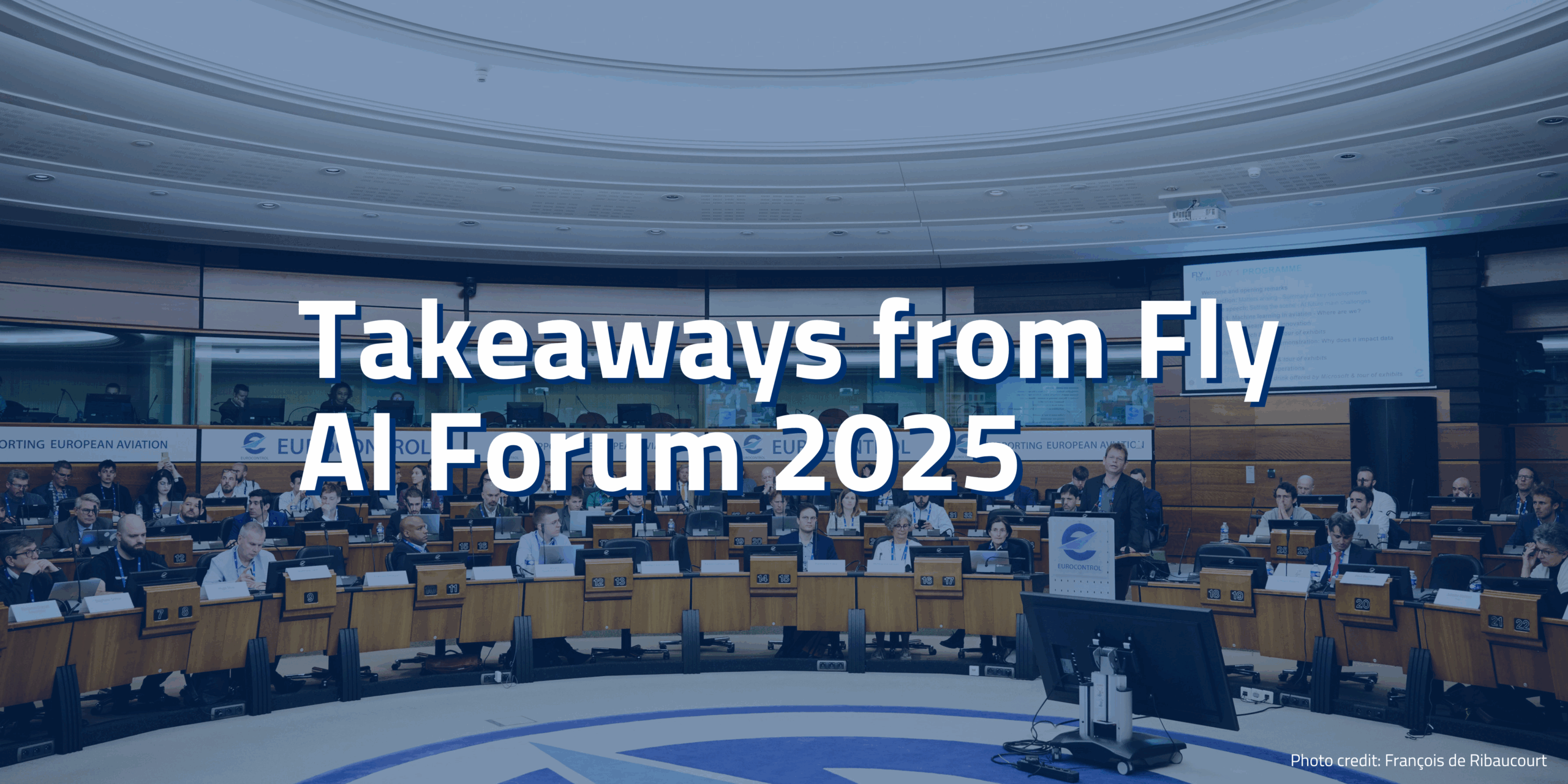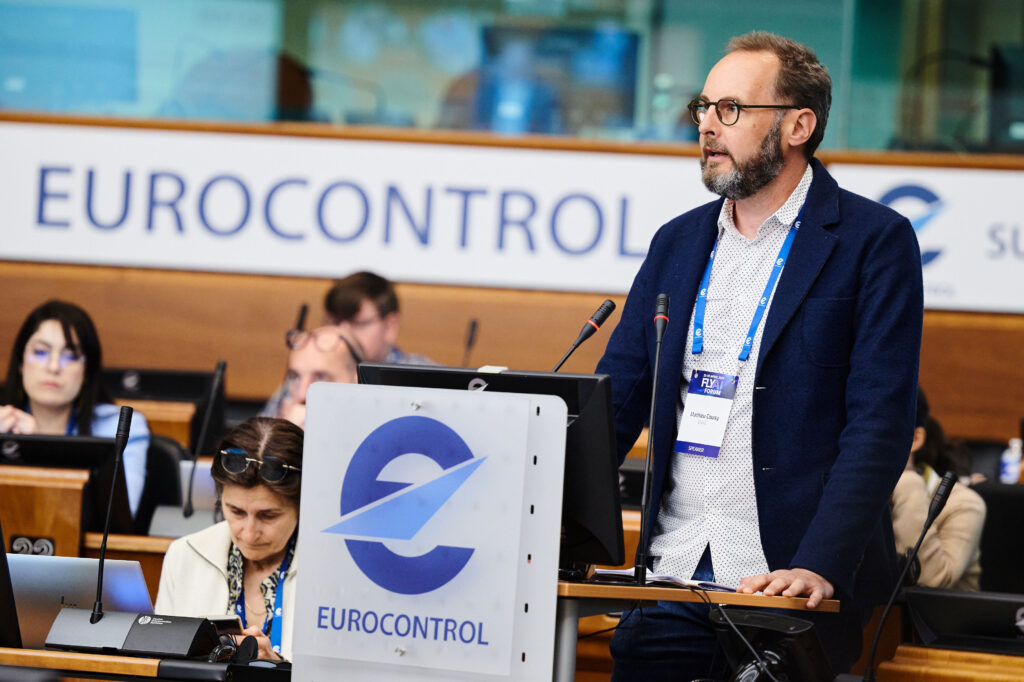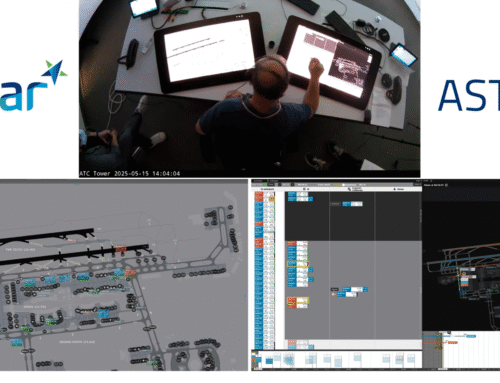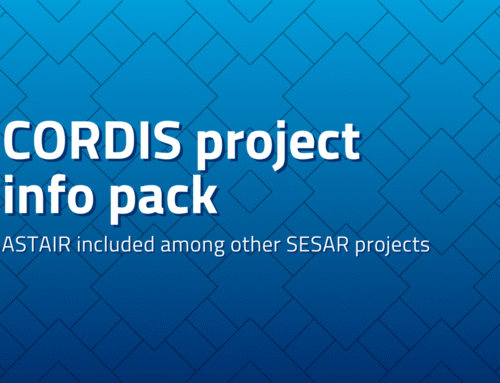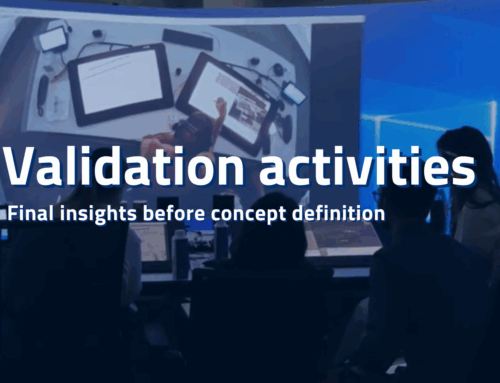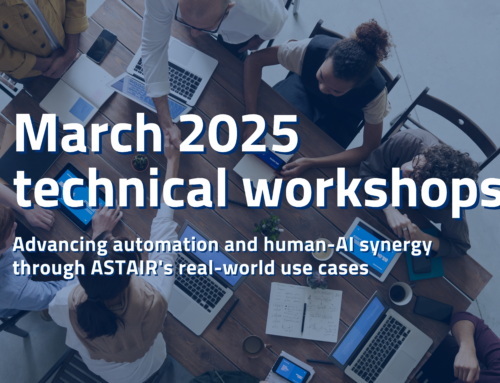On 22–23 April 2025, the ASTAIR project participated in the Fly AI Forum, held at EUROCONTROL headquarters in Brussels. The event, organised by EUROCONTROL on behalf of the Fly AI partners, brought together key institutional and industrial stakeholders to discuss the current state and future directions of artificial intelligence (AI) in aviation.
The Forum reiterated the strategic importance of AI and machine learning across operational, technical, regulatory and human-centred domains. A recurring theme was the need to ensure safety, accountability, and public trust in the deployment of highly automated, data-driven systems. Throughout the sessions, the interplay between regulation, innovation, and certification was examined, emphasising how regulatory clarity and a trust-based deployment framework are critical to enabling the uptake of AI-based solutions.
Human-Machine Interaction and Symbolic AI
ASTAIR contributed to these discussions through a presentation delivered in the Societal and Human Aspects session on the second day of the Forum. The project’s approach focuses on symbolic AI techniques, as opposed to machine learning. While symbolic AI may appear less aligned with current mainstream trends, it was presented as the most suitable option for generating reliable clearances for vehicles operating in safety-critical environments. Nevertheless, the integration of complementary machine learning modules could enhance ASTAIR’s performance in areas such as estimating TOBT (Target Off-Block Time) and ETA (Estimated Time of Arrival), or in modelling human controller habits that are not codified in manuals.
ASTAIR’s contribution lies in its human-centric approach to automation, where the alignment between algorithmic behaviour and human operational requirements is central. Rather than supporting human decision-making through advisory tools, the project explores pathways toward full automation, while recognising the importance of incremental adoption. This includes intermediate applications, such as automated taxiing systems and follow-me vehicles, which are already emerging in airport environments.
Addressing Safety and Regulatory Challenges
One of the project’s key directions is the progressive validation of human-machine interaction (HMI) concepts. Recent validation activities have shown the need for refinements in the way information is presented to air traffic controllers, particularly in terms of visualising both the current traffic situation and future AI-driven plans simultaneously. In parallel, improvements in AI adaptability to real-time operational delays are being investigated.
ASTAIR also addresses cross-cutting challenges related to liability and accountability, which remain central to the integration of AI into air traffic management. The project continues to explore how to ensure a balanced evolution of automation, keeping safety and operability at the core.
Participation in the Fly AI Forum 2025 provided an opportunity for ASTAIR to position its work within the broader European research landscape and to engage with ongoing discussions on trustworthy and human-aligned AI in aviation.

